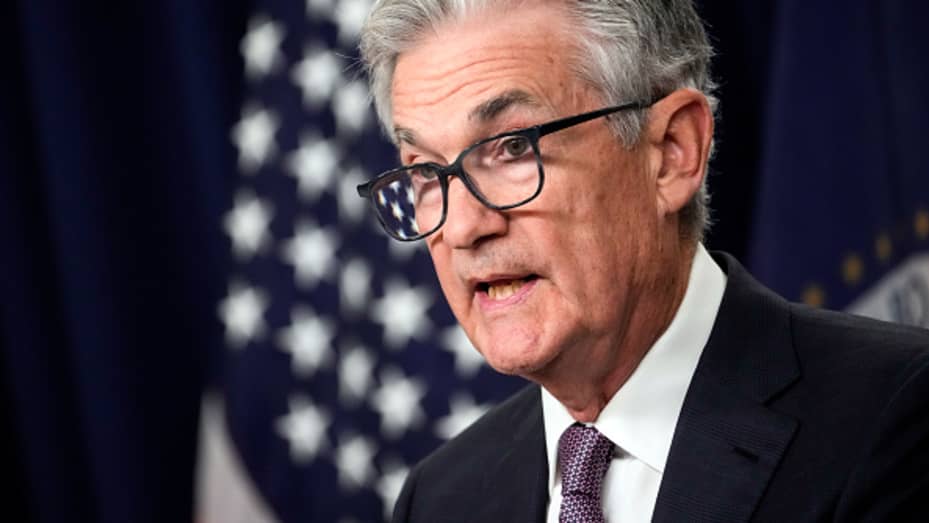The Art of Economic Fine-Tuning
How the Federal Reserve’s Interest Rate Magic Shapes Our Finances”
The Federal Reserve, often referred to simply as the Fed, holds the reins to the U.S. economy’s monetary policy, exerting a profound influence over the nation’s financial stability. One of its most potent tools in this endeavor is the subtle art of interest rate manipulation. By setting the target range for the federal funds rate, the interest rate at which banks exchange funds overnight, the Fed orchestrates a delicate dance that ripples through the entire financial landscape, impacting everything from your credit card interest rates to the overall health of the economy.
It’s not an overstatement to say that the Federal Reserve’s decisions on interest rates can make or break the economic fortunes of individuals, businesses, and the nation as a whole. The fluctuations of these rates have a direct bearing on the costs of borrowing, shaping our financial decisions and influencing the broader economic trajectory.
When the Fed lowers interest rates, as it typically does in response to economic slowdowns, it’s like injecting a shot of adrenaline into the economy’s bloodstream. This makes borrowing more affordable, encouraging individuals to purchase homes, buy cars, and invest in businesses. The result is a surge in economic activity, with businesses expanding, people spending, and employment prospects improving.
Conversely, when the Fed decides to raise interest rates, it’s akin to applying the brakes. Borrowing becomes more expensive, and individuals may think twice before making significant purchases. Businesses may defer investment decisions, and the economy tends to cool down. The goal here is to prevent the economy from overheating and to keep inflation in check.
The Federal Reserve’s interest rate decisions aren’t made in a vacuum. They’re informed by a complex web of factors, including inflation, employment rates, and overall economic growth. If inflation is on the rise, the Fed may tap the brakes by raising interest rates to curb excessive spending. When employment is lagging, it may opt to lower interest rates to stimulate job growth. If the economy is sluggish, interest rates may be lowered to breathe life back into economic activity.

img credit google
In recent news, the Federal Reserve has made headlines by maintaining interest rates at a 22-year high, taking this cautious approach to keep inflation in check. This decision has far-reaching consequences, impacting not only the nation’s economic health but also our individual financial choices.
If you’re wondering how these interest rate maneuvers influence your credit card, you’re not alone. The rates set by the Federal Reserve have a direct impact on the interest you pay on credit card balances. When rates are low, credit card interest is more manageable, making it easier for you to carry balances or finance larger purchases. Conversely, when rates climb, credit card interest becomes costlier, making it prudent to pay off balances promptly.
The Federal Reserve’s decisions are a delicate balancing act, a nuanced interplay of economic forces that shape our financial landscape. As you navigate your own financial journey, understanding this dance between interest rates and economic policy can empower you to make informed decisions, whether you’re saving, investing, or simply managing your credit card balances. So, stay tuned to the Fed’s moves—they’re not just headlines but a key that can unlock the secrets of your financial future.
In the world of finance, interest rates wield a formidable influence. They are the linchpin in the intricate machinery that drives economies forward or puts on the brakes. For individuals, interest rates are a key factor in determining the cost of borrowing and saving. A nuanced understanding of this dynamic can help you make more informed financial decisions.
When the Federal Reserve maintains high interest rates, as it has recently to control inflation, the cost of borrowing rises, impacting loans and credit cards alike. Credit cardholders often feel the pinch as their balances accumulate interest at a faster rate, making it crucial to manage and pay off debts judiciously. On the flip side, savers may find themselves earning more interest on their savings, which can be a silver lining.
For those with variable-rate credit cards, the impact of the Federal Reserve’s decisions is particularly noteworthy. These rates can fluctuate in sync with changes in the federal funds rate, directly affecting monthly minimum payments and the overall cost of carrying credit card debt. It’s a reminder that staying attuned to the economic climate and interest rate shifts can help you manage your finances more effectively.

img credit google
But what about other aspects of your financial life? The ripple effect of the Federal Reserve’s actions extends far beyond your credit card statement. Mortgage rates, car loans, student loans, and even the yields on your savings accounts can all be influenced by these decisions. Thus, whether you’re considering a major purchase, refinancing a loan, or simply managing your financial portfolio, the Fed’s interest rate decisions are paramount.
Moreover, the broader economic health of the nation hinges on these choices. The Federal Reserve’s strategy for taming inflation, stimulating job growth, and maintaining financial stability has repercussions that touch the lives of every citizen. It’s a delicate balance, an intricate dance between safeguarding economic health and fostering individual financial well-being.
As the Federal Reserve continues to steer the nation’s monetary policy, it reminds us that economics is more than just numbers and charts; it’s a living, breathing entity that affects our daily lives. It shapes our financial decisions and influences the opportunities and challenges we face.
So, whether you’re navigating your credit card balances, contemplating a new home, or planning for your financial future, remember that you’re not alone in this journey. The Federal Reserve, through its interest rate decisions, is charting a course for economic stability. By staying informed and making prudent financial choices, you can navigate these waters with confidence and ensure that your financial ship sails smoothly, even in the face of economic tides.